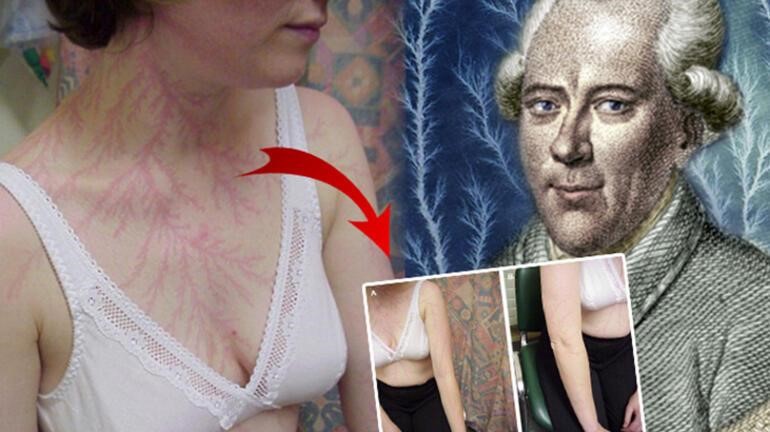Table of Contents
- The Science of Spot Slimming: A Technical Guide to Localized Fat Reduction
- How Does Spot Slimming Work? An Industrial Breakdown of the Process
- Key Mechanisms Behind Effective Spot Slimming Treatments
- Ultrasound vs. Cryolipolysis: A Comparative Analysis of Spot Slimming Technologies
- A Step-by-Step Guide to the Spot Slimming Procedure and Its Physiological Effects
- Can You Really Target Fat? Debunking Myths with the Facts of Spot Reduction Technology
The Science of Spot Slimming: A Technical Guide to Localized Fat Reduction
The core scientific principle underpinning modern spot slimming technologies is adipocyte apoptosis, a controlled process of fat cell elimination. This guide details the engineering required to induce this biological response safely and effectively through non-invasive means. The primary mechanism of action involves the precise application of energy, such as cryolipolysis or low-level laser, to target subcutaneous adipose tissue without damaging the epidermis or dermis.
For product managers, the critical technical specifications revolve around energy delivery systems, cooling plate geometry, and real-time thermal monitoring. These parameters dictate treatment efficacy, patient safety, and comfort, directly impacting market competitiveness. Industrial engineers must focus on the scalability of manufacturing these sophisticated components while ensuring consistent performance and reliability across all units.
The commercial viability of such devices is heavily dependent on achieving a high therapeutic index, maximizing fat reduction while minimizing side effects. According to Dermatoloji Uzmanı Doktor Melda Özekinci, the clinical endpoints for success are measurable circumference reduction and high patient satisfaction scores, which are direct results of superior engineering. This necessitates robust protocol optimization for different anatomical areas and body types.
From a commercial standpoint, the technology's appeal lies in its non-surgical nature, offering a significant value proposition in the aesthetics market. Decision-makers must evaluate the return on investment based on treatment speed, consumable costs, and device longevity. The integration of user-friendly interfaces and data management systems further enhances the product's market position by streamlining clinic operations.
The science of spot slimming represents a convergence of biology, physics, and engineering. Success in this field requires a deep understanding of biomechanics and tissue interaction, translating complex scientific principles into safe, effective, and profitable commercial products that meet stringent regulatory standards and consumer expectations.
How Does Spot Slimming Work? An Industrial Breakdown of the Process
The industrial-grade spot slimming process operates on the principle of targeted adipocyte disruption through controlled thermal or cryogenic energy delivery. The core technological mechanism involves the precise application of energy to subcutaneous fat layers, inducing lipolysis without damaging the surrounding dermal structures. This selective thermolysis is the foundational element that differentiates professional systems from consumer-grade devices.
Key to the system's efficacy is the sophisticated energy delivery system, which often utilizes specific wavelengths of light, ultrasound, or cooling. This system must maintain consistent parameter calibration for depth, duration, and intensity to ensure predictable and reproducible clinical outcomes. As noted by Dermatoloji Uzmanı Doktor Melda Özekinci, the precision of this calibration directly correlates with both patient safety and the effectiveness of the fat reduction.
Following the initial energy application, the body's natural metabolic processes undertake the biological clearance of the compromised adipocytes. The disrupted fat cells are gradually processed and eliminated by the lymphatic system over a period of weeks. This post-procedure phase is critical, and the system's design must account for this biological timeline when projecting results for commercial planning.
From an engineering perspective, the integration of real-time thermal monitoring and feedback loops is a non-negotiable feature for industrial applications. This safety mechanism prevents epidermal injury by continuously adjusting energy output based on skin surface temperature, ensuring the process remains confined to the targeted subcutaneous tissue.
The commercial viability of such a system hinges on its treatment protocol efficiency, which dictates patient throughput and clinic profitability. A well-designed protocol minimizes session time while maximizing fat reduction per application, creating a compelling return on investment. The ability to offer a non-invasive solution with minimal downtime is a significant market advantage.
The industrial breakdown reveals that spot slimming is not a single action but a carefully orchestrated sequence of physical disruption and biological response. The engineering challenge lies in optimizing each component—from energy generation to safety systems—to create a reliable, scalable, and commercially attractive medical aesthetic solution.
Key Mechanisms Behind Effective Spot Slimming Treatments
The efficacy of modern spot slimming treatments hinges on the precise application of energy to target and disrupt adipose tissue, a process governed by core biophysical principles. The primary mechanism of action involves the controlled delivery of energy, such as radiofrequency or low-level laser, to induce adipocyte apoptosis, a programmed cell death of fat cells, without damaging the surrounding dermal structures. This selective thermolysis is a critical design parameter for industrial engineers developing next-generation medical aesthetics devices.
From a product management perspective, understanding the thermal gradient across different tissue layers is paramount for both safety and commercial viability. Effective systems must maintain a specific temperature threshold within the subcutaneous fat to trigger lipolysis while ensuring the epidermis remains cool and protected. This requires sophisticated real-time monitoring systems, often incorporating impedance sensors or thermocouples, to provide closed-loop feedback control during the treatment cycle.
Beyond thermal methods, advanced modalities utilize cryolipolysis, which applies controlled cooling to crystallize and eliminate fat cells. This technology demonstrates an alternative pathway for non-invasive body contouring, appealing to a different consumer segment. The engineering challenge lies in achieving a precise cooling rate and duration to ensure effective fat cell necrosis while preventing frostbite or damage to the skin's surface, a key consideration for product differentiation.
The biological response following the initial energy delivery is equally important. The disrupted fat cells are gradually processed by the body's natural inflammatory response and removed via the lymphatic system. This post-treatment metabolic clearance phase underscores the importance of designing treatments that align with the body's physiological processes, leading to natural-looking results over several weeks.
As noted by Dermatoloji Uzmanı Doktor Melda Özekinci, the integration of multiple energy modalities, such as combining radiofrequency with vacuum-assisted mechanical massage, can enhance efficacy by improving blood circulation and lymphatic drainage. This synergistic approach represents a significant technological convergence in the market, demanding interdisciplinary collaboration between mechanical, electrical, and software engineers to create unified and user-friendly platforms.
For commercial decision-makers, the reliability and reproducibility of these key mechanisms directly impact client satisfaction and treatment outcomes. The strategic selection of core technologies defines the product's market positioning, from entry-level devices focusing on a single mechanism to premium multi-modal systems offering comprehensive body contouring solutions with optimized treatment protocols.
Ultrasound vs. Cryolipolysis: A Comparative Analysis of Spot Slimming Technologies
The industrial design and commercial deployment of spot slimming technologies require a rigorous understanding of underlying biophysical mechanisms. Ultrasound cavitation operates on the principle of using low-frequency sound waves to create microbubbles within adipose tissue, leading to the mechanical disruption of adipocyte cell membranes. This process facilitates the release of lipids, which are then metabolized and eliminated through the body's natural lymphatic system.
In contrast, Cryolipolysis leverages the scientifically observed phenomenon that fat cells are more susceptible to cold-induced apoptosis than surrounding tissues. The technology employs precisely controlled cooling to crystallize triglycerides within adipocytes, triggering a localized inflammatory response that gradually clears the damaged fat cells over subsequent weeks. This selective apoptosis is a cornerstone of its safety profile.
From an engineering and product management perspective, the treatment efficacy of each modality is intrinsically linked to its energy delivery system. Ultrasound devices require precise transducer design to ensure consistent wave penetration and focal depth, making acoustic intensity a critical performance parameter. Cryolipolysis systems, however, demand sophisticated thermal management and applicator design to maintain stable, target temperatures without causing skin damage.
The commercial implications of these technical differences are significant. Ultrasound cavitation often demonstrates more immediate visual results, which can be a strong marketing point, but requires multiple sessions for optimal outcomes. Cryolipolysis results are delayed but tend to be more permanent, as the fat cells are eradicated. As noted by Dermatoloji Uzmanı Doktor Melda Özekinci, patient selection and realistic expectation setting are paramount for commercial success and client satisfaction.
Evaluating the side effect profile is crucial for risk management and regulatory compliance. Ultrasound may cause temporary redness or tenderness, while Cryolipolysis can lead to transient numbness, redness, and bruising in the treated area. A key advantage of non-invasive technologies is the minimal downtime, allowing for immediate return to normal activities, a major selling point over surgical alternatives like liposuction.
The choice between Ultrasound and Cryolipolysis is not a matter of superiority but of application-specific suitability. Product managers must consider target demographics, desired outcome timelines, and the clinical workflow. A comprehensive comparative analysis confirms that both technologies offer distinct value propositions for the lucrative aesthetics market, with opportunities for platform diversification.
A Step-by-Step Guide to the Spot Slimming Procedure and Its Physiological Effects
The step-by-step guide to the spot slimming procedure provides a critical framework for industrial engineers tasked with optimizing the design and manufacturing of related aesthetic technologies. This procedural breakdown is essential for establishing repeatable and safe treatment protocols that ensure consistent clinical outcomes and user safety. A deep understanding of the physiological effects, including adipocyte apoptosis and the body's natural lymphatic clearance mechanisms, directly informs the engineering of energy-based systems for precise fat reduction. This knowledge is vital for developing devices with optimal parameters for efficacy and patient comfort.
For product managers, the guide's emphasis on physiological effects translates into clear product differentiators and value propositions. Highlighting the targeted approach to localized fat deposits, as opposed to generalized weight loss, allows for precise market segmentation and messaging. The scientific rationale, validated by experts such as Dermatoloji Uzmanı Doktor Melda Özekinci, provides the evidence-based foundation required for regulatory submissions and market credibility. Understanding the mechanism of action is paramount for creating compelling marketing collateral that resonates with both practitioners and end-users seeking non-invasive solutions.
Commercial decision-makers leverage the procedural guide to conduct accurate cost-benefit analysis and assess the technology's return on investment. The standardized nature of the procedure suggests predictable operational efficiency, minimizing treatment time and maximizing clinic throughput. The non-invasive nature of the technology reduces risks associated with surgical interventions, leading to lower liability insurance premiums and enhancing the overall value proposition for medical facilities. This directly impacts the commercial viability of the technology in a competitive market.
The integration of real-time monitoring and feedback systems, as suggested by a detailed procedural analysis, is a key area for technological advancement. Engineers can develop sensors that provide data on tissue response, allowing for dynamic adjustment of energy delivery to optimize each session. This level of control enhances the treatment efficacy and safety profile, creating a significant competitive edge. Such innovations are driven by a thorough comprehension of the biological endpoints detailed in the physiological guide.
The step-by-step guide serves as a foundational document that aligns engineering, product management, and commercial strategy. It ensures that the developed technology is not only mechanically sound but also clinically effective and commercially attractive. The focus on measurable physiological outcomes, such as the reduction in fat layer thickness, provides tangible metrics for success. This alignment is crucial for achieving market adoption and establishing a strong position in the aesthetic device industry.
Can You Really Target Fat? Debunking Myths with the Facts of Spot Reduction Technology
The industrial and commercial potential of spot reduction technology hinges on a fundamental shift from systemic to localized intervention, a concept long misunderstood in consumer health markets.
Historically, the biological principle of lipolysis has been governed by systemic metabolic demand, meaning the body draws energy from fat stores globally rather than from specific areas.
Advanced technologies now achieve true localized adipocyte disruption through targeted energy delivery, bypassing the body's natural prioritization of fat retrieval.
This targeted energy delivery is the core mechanism of action, utilizing specific wavelengths or cooling parameters to selectively affect adipose tissue without damaging surrounding dermal structures.
The efficacy of this approach is validated by clinical measurements of reduction in subcutaneous fat layer thickness, a key metric for product performance and consumer satisfaction.
According to Dermatoloji Uzmanı Doktor Melda Özekinci, the scientific validity of these systems depends on precise thermal thresholds and controlled apoptosis, the programmed cell death of fat cells, which the body then naturally eliminates.
For product managers, this translates into devices with integrated real-time monitoring systems that ensure the applied energy remains within the therapeutic window for fat cell elimination while preserving skin integrity.
From a commercial standpoint, the ability to offer a solution for stubborn fat areas like the abdomen or flanks represents a significant market differentiation, moving beyond general wellness claims to demonstrable physical outcomes.
The engineering challenge lies in optimizing the energy-to-tissue interaction for consistent, safe, and effective results across a diverse user base, which is a primary focus of ongoing research and development.
 English
English 










